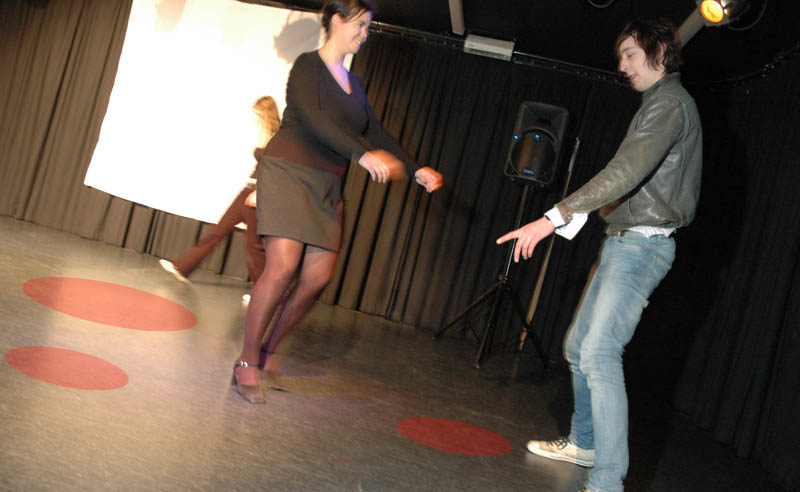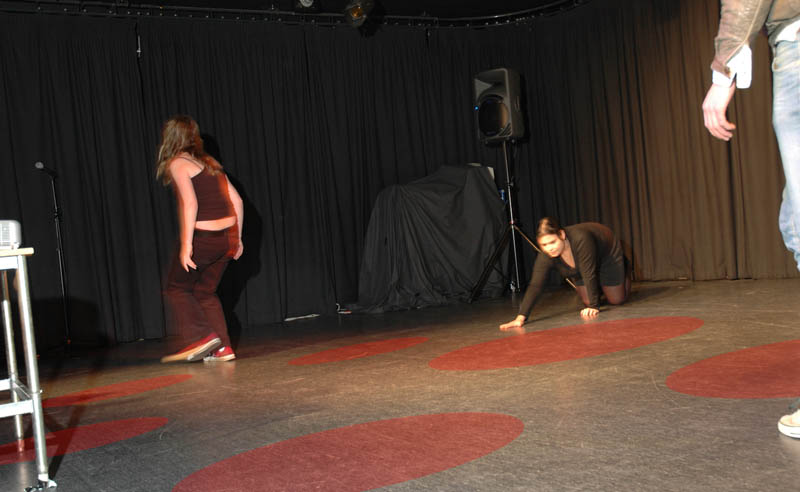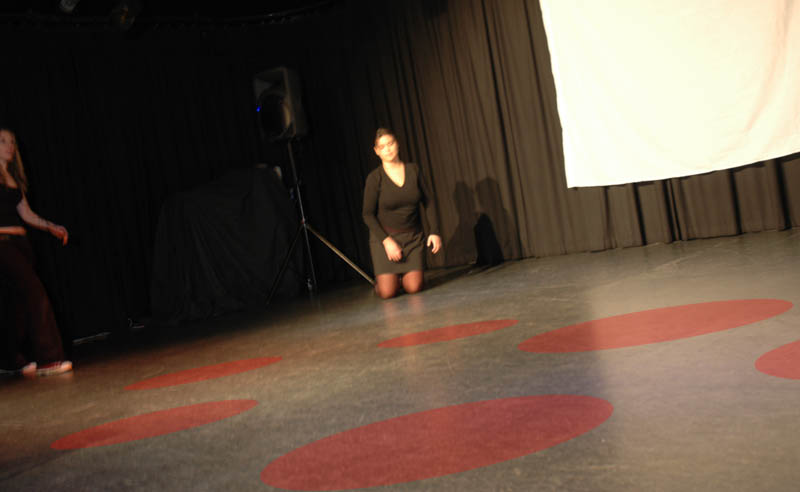This installation transforms the human body into a dynamic instrument, inviting participants to explore the spatial and sonic possibilities of a responsive environment. The work unfolds within a defined stage space, typically characterized by a dark backdrop and minimal visual distractions, creating a focused arena for physical interaction.
The installation’s core mechanism involves a system of cameras and computer software that meticulously analyzes the movement, position, and speed of participants within the space. This real-time analysis translates physical gestures and spatial occupation into sonic events, effectively “sonifying” the human body.
Participants, typically three in number, are introduced to the stage without explicit instructions, encouraging a process of intuitive exploration and discovery. Through trial and error, they gradually decipher the relationship between their movements and the resulting soundscapes. The images reveal participants experimenting with various forms of locomotion and gesture, traversing the stage, crouching, and reaching, as they seek to activate the hidden sonic triggers.
While the “hit-zones” themselves are not visually apparent within the installation (the red oval markers in the photographs are added for documentation purposes), the participants’ experience is one of navigating a sonic topography. Their bodies become conductors, “plucking soundscapes out of the air” as they move through specific areas of the space. Speakers positioned within the stage environment provide the auditory feedback, creating an immersive and immediate connection between action and sound.
“With the Interactive Soundscape” explores the interplay between the physical and the auditory, challenging traditional notions of musical performance and audience engagement. It positions the human body not as a passive observer but as an active agent in the creation of sound, blurring the boundaries between performer and instrument. The installation invites reflection on the ways in which we inhabit and activate space, and how our movements can shape our sonic experience of the world.
Materials Used: Stage space, cameras, computer, software for motion analysis and sound generation, speakers, performers.
First time performed in: 2005.




